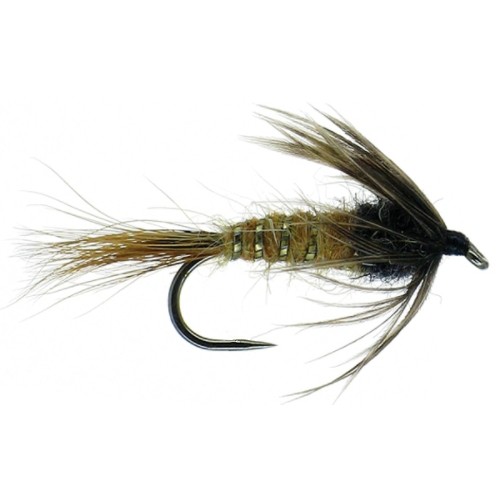
On The Fly
"Fly tying is a school from which we never graduate"
TYING NEWS
The Southern Oregon Fly Tyers invite you to attend their next meeting, Tuesday, January 12,
2010, at 6:30 PM, at the Madrone Hill Mobile Home Park community building near Gold Hill. Bring a
friend, come early so you don't miss anything, and stay late. Tiers need not be experienced, and those with
all levels of skill are welcome. Each meeting a member is encouraged to demonstrate a new or different
skill, from simple to difficult. For more information, call Dan Kellogg at 773-4724.
At the December meeting, we were treated to a very enjoyable evening by Dave Hamilton,
teaching us to tie some very buggy looking nymphs. Dave used real skunk, but he says any good soft fur with
guard hair will work. Thanks, Dave.
DIRECTIONS: Take Gold Hill Exit #40, off of I-5 and go west, toward Jacksonville, 1.3
miles, until you reach the brick entrance way to the Madrone Hill Mobile Home Park on the right. Youíll
pass a golf course parking lot on Your left shortly after leaving the freeway. After you turn right into the
mobile home park, proceed to the community building which is located about 100 yards ahead on the left. The
address is 8401 Old Stage Rd. Please park your vehicle on the bare dirt in the parking lot to avoid the
wooden septic covers in the grass.
 PATTERN OF THE MONTH - Red Squirrel Nymph
PATTERN OF THE MONTH - Red Squirrel Nymph
Hook: Daiichi 1710, 2X-long nymph, down eye.
Thread: Black, 6-0.
Weight: Lead wire.
Rib: Fine brass wire.
Tail: Red fox squirrel guard hairs.
Abdomen: Red fox squirrel body belly fur.
Thorax: Red fox squirrel darker back hair w/underfur.
Legs: Dark Hungarian Partridge or Grouse feather.
Tying Instructions
Step 1: Mash the barb and mount the hook in the vise. Start the tying thread one eye width behind the eye
and wrap a thread base back to just above the barb of the hook.
Step 2: Wrap lead wire around the shank covering the front 1/3. Over wrap the lead wire with thread to
secure and bring the thread back to the hook bend.
Step 3: Select a small bunch of guard hairs off the skin, measure one shank length, and tie in as a tail.
Tie down the butts along the shank.
Step 4: Tie in the brass wire to be used as a rib later.
Step 5: Dub the body with the lighter belly fur creating a tapered abdomen. Cover only to the 2/3 point,
leaving room for the thorax.
Step 6: Spiral wrap the wire over the abdomen in 5 equal turns. Tie off and trim.
Step 7: Dub the thorax with the darker back fur.
Step 8: Tie in the soft hackle feather and make 2-3 wraps forward creating the legs. Tie off and trim. Form
a neat tapered head, whip finish and cement.
This pattern was created about 40 years ago by Dave Whitlock. It was actually his first
nymph pattern and still remains his favorite. It is an absolutely excellent fish getter, an awesome pattern
for both cold and warm water species. Tied in smaller sizes, it can imitate any light-colored mayfly nymph,
caddis emerger, or even a little yellow stonefly nymph. Because the Red Squirrel Nymph resembles numerous
aquatic insects without imitating any in particular, it is a true attractor fly. Tie this one in numerous
variations. With a bead head, a lead weighted body, weightless in smaller sizes, with hackle or substitute
rubber legs in the largest sizes. Fill a whole fly box for any time you need a good nymph. So tie some up,
give them a test flight and let me know how you do.
Tie One On,
Dan Kellogg (you can contact me at FLYGUY@EZNORTHWEST.COM)